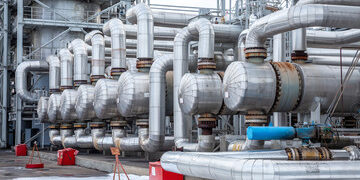In a world where efficient waste management is no longer a luxury but a necessity, the garbage compactor machine has emerged as a game-changer. Whether in a commercial facility, residential complex, or industrial setting, the accumulation of waste poses significant challenges—not just in terms of hygiene but also in terms of space, logistics, and cost. With an increasing focus on sustainability and streamlined operations, more organizations turn to compactors to manage their waste intelligently.
Understanding the Role of a Garbage Compactor Machine
A garbage compactor machine is designed to reduce the volume of waste by compressing it into tightly packed bundles. These machines use hydraulic mechanisms to apply pressure and condense large amounts of garbage into compact units, making it easier to handle, transport, and dispose of waste materials. The reduced size not only helps conserve space but also minimizes the frequency of waste collection, leading to significant savings over time.
Unlike traditional bins or containers, which require frequent emptying and occupy large amounts of space, a compactor machine offers a cleaner, more structured approach to waste management. The machine’s design focuses on durability, ease of use, and efficiency—making it suitable for a variety of environments, from retail stores and restaurants to factories and logistics hubs.
Benefits Beyond Compression
One of the most obvious advantages of using a garbage compactor machine is its ability to drastically reduce the volume of waste. But its benefits go much deeper. By controlling how waste is stored and processed, businesses and facilities can maintain cleaner workspaces, comply with regulatory standards, and reduce the risk of fire hazards caused by loose, scattered waste.
Moreover, a compacted waste stream streamlines the logistics of disposal. Transportation becomes easier and more cost-effective because fewer trips are required to move the same amount of waste. This proves particularly valuable in remote or high-traffic areas where garbage collection remains infrequent or expensive.
Advanced Engineering for Optimal Performance
Modern garbage compactor machines feature a high degree of engineering precision. From the hydraulic systems to the reinforced steel construction, each element withstands the rigors of heavy-duty use. The compaction ratio, typically ranging from 3:1 to 6:1, ensures that even voluminous waste materials like cardboard, plastic, or organic waste condense into manageable loads.
Some machines feature fully enclosed systems to minimize odor and prevent pest intrusion. Others come with built-in sensors and control panels that alert users when the unit is full or requires maintenance. These intelligent features not only enhance performance but also reduce the risk of mechanical failure and prolong the life of the machine.
Versatility Across Sectors
The utility of a garbage compactor machine spans across various industries. In retail environments, they are used to manage packaging waste. In food service industries, they help handle organic and general waste more hygienically. Factories and industrial units utilize compactors to deal with large-scale byproducts of manufacturing processes. Even residential complexes benefit from centralized compactor units that make community waste management more efficient.
What makes these machines so versatile is their ability to handle different waste streams. Dry, wet, hazardous, or recyclable—there’s a compactor solution tailored for every need. Vertical compactors are ideal for areas with limited floor space, while stationary and portable models serve larger operations that require mobility and higher capacity.
Efficiency and Safety First
Safety and user-friendliness are major considerations in the design of any compactor machine. Integrated safety features like emergency stop buttons, automatic shut-off, and overload protection help prevent accidents during operation. Meanwhile, user interfaces are intuitive, often requiring minimal training for staff to operate them safely and effectively.
Some units feature tamper-proof doors and locking systems to prevent unauthorized use, making them suitable for public or semi-public environments. These safety measures ensure that the compactor provides its benefits without compromising the well-being of workers or the facility.
Long-Term Cost Savings
Investing in a garbage compactor machine may seem like a large upfront cost, but it delivers significant returns over time. By reducing the number of waste pickups, businesses can save on labor and disposal fees. The reduced risk of pest infestations and workplace hazards also translates to fewer liabilities and potential fines.
Furthermore, many facilities find that using a compactor extends the life of their waste bins and reduces the need for disposable liners and other supplies. With proper maintenance, these machines can operate reliably for years, making them a financially sound investment for any organization looking to improve waste handling.
Final Thoughts
In an era where waste management is under increased scrutiny and operational efficiency is paramount, the garbage compactor machine has become an indispensable tool. It maximizes space, improves hygiene, streamlines logistics, and significantly cuts costs—all while contributing to a cleaner and more sustainable environment.
By adopting this technology, businesses can transform how they handle waste, turning a logistical headache into a streamlined, manageable process. Whether you operate a small retail outlet or a large industrial facility, investing in a reliable garbage compactor is a strategic move that pays off in more ways than one.




























